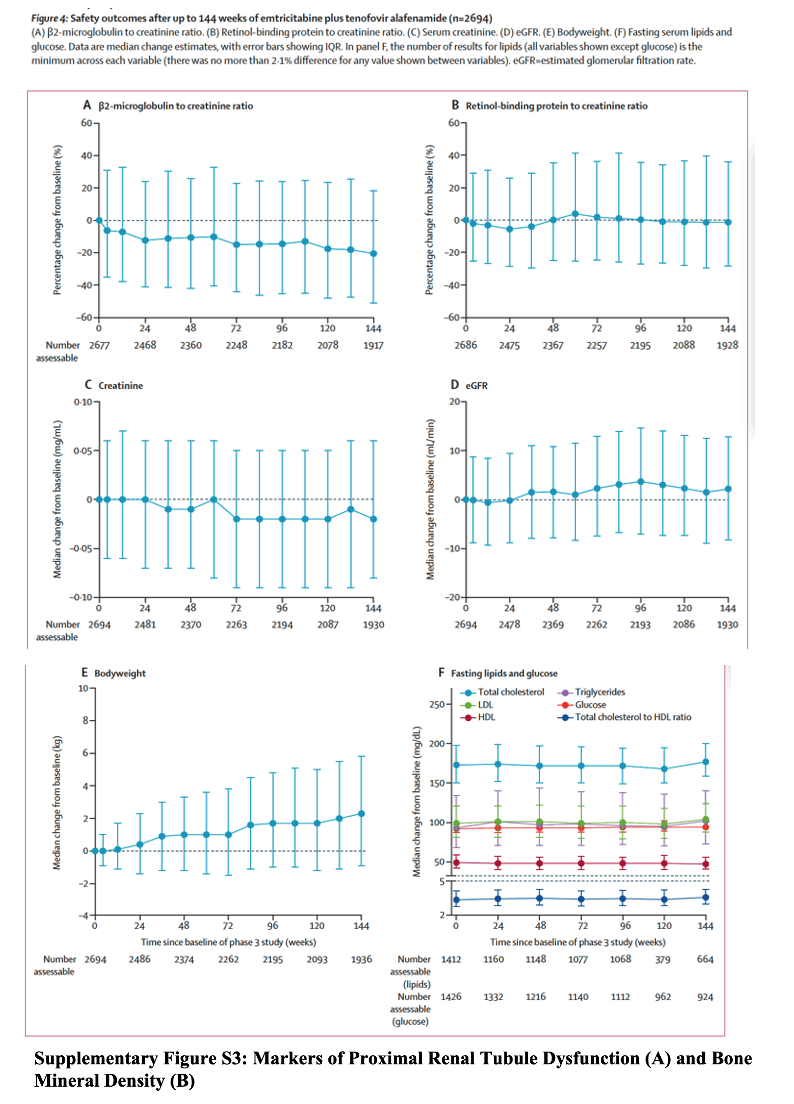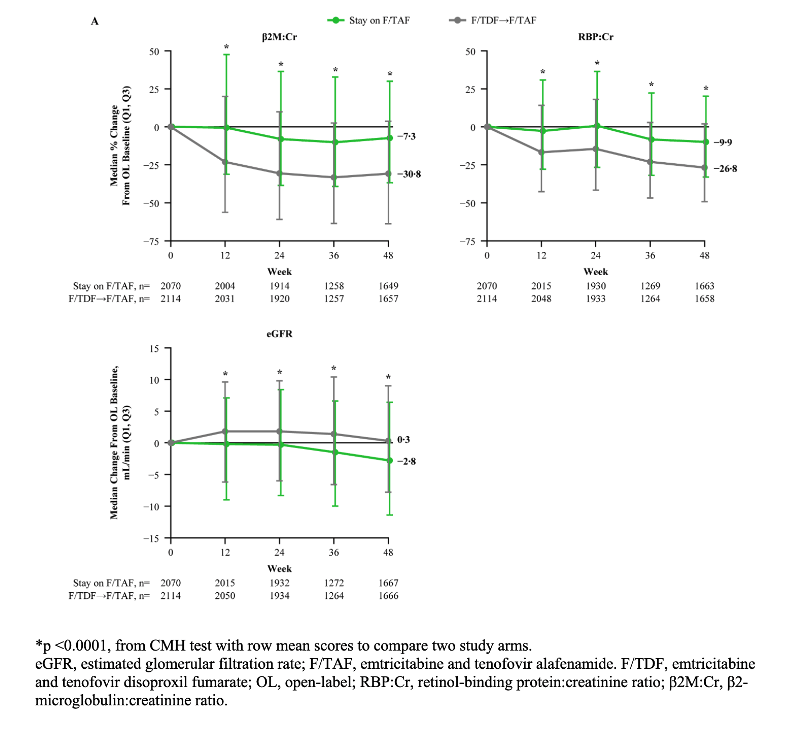| |
HIV-1 infection kinetics, drug resistance, and long-term safety of pre-exposure prophylaxis with emtricitabine plus tenofovir alafenamide (DISCOVER): week 144 open-label extension of a randomized, controlled, phase 3 trial; Commentary
|
| |
| |
Download the PDF here
Download the PDF here
Download the PDF here
Aug 2024
Comment: New to this analysis of the DISCOVER study is an evaluation of the potential for RNA testing to find infections earlier, which could reduce the risk of developing resistant virus after infection. For both concerns, the DISCOVER data are very reassuring regarding daily oral prevention drugs. By analysing samples collected during previous study visits, early HIV detection through RNA testing found only four of 23 incident cases with available samples. Delay in the detection of HIV with rapid testing is known to occur for a small proportion of people due to a delay in the development of antibody response. Therefore, this number of participants with delayed detection of infection falls within what might be expected due to natural variation in HIV infection. A small proportion of infections could be detected earlier through RNA testing, but sustained delays in detection of infection, even with daily use of oral drugs for HIV infection, are rare.3 As determined by Wohl and colleagues, RNA testing does not add substantial benefits to management of HIV PrEP while adding substantial cost and complexity. Therefore, I support the pragmatic approach recommended per WHO guidance,4 in which RNA testing is not part of routine PrEP monitoring. Additionally, no resistance was detected among the incident cases. This finding aligns with previous PrEP trials on oral emtricitabine plus tenofovir disoproxil fumarate in which resistance in incident infections was rare.5
In the context of long-acting injectable antiretrovirals, current evidence on the risk of resistance is slightly different. In a randomised trial comparing injectable cabotegravir with oral emtricitabine plus tenofovir disoproxil fumarate in cisgender men and transgender women who have sex with men,6 continuous exposure to cabotegravir after breakthrough infection resulted in the development of resistance in four of nine participants. However, with continuous exposure to cabotegravir, there was a two-thirds reduction in the risk of HIV acquisition compared with oral emtricitabine plus tenofovir disoproxil fumarate (0·41 per 100 person-years vs 1·22 per 100 person-years).6 Overall, long-acting PrEP is a powerful tool to prevent HIV acquisition.
Although concerns around risk of development of resistance if infection occurs while on oral PrEP are valid, in the presence of these drugs, 90% of infections are averted,7 and hence there are profound benefits in the simple and pragmatic implementation of PrEP for the prevention of HIV.
-------------------
Results: Between Sept 13, 2016, and June 30, 2017, 5399 participants were enrolled and randomly assigned in DISCOVER. 2699 were assigned to receive emtricitabine plus tenofovir disoproxil fumarate and 2700 were assigned to receive emtricitabine plus tenofovir alafenamide, of whom 2693 and 2694, respectively, received at least one dose of study drug. 2115 (79%) assigned to emtricitabine plus tenofovir disoproxil fumarate switched to emtricitabine plus tenofovir alafenamide in the open-label phase, and 2070 (77%) continued with emtricitabine plus tenofovir alafenamide in the open-label phase. As of data cutoff (Dec 10, 2020), after 15 817 person-years of follow-up, 27 new HIV-1 diagnoses were observed across the total study period, with three occurring during the open-label phase.
In participants who were initially assigned to emtricitabine plus tenofovir alafenamide, the incidence was 0·13 per 100 person-years (95% CI 0·061–0·23; ten of 2670). Stored plasma samples were available for 23 of 27 participants, including 22 with incident infection. In four (17%) of 23 participants, retrospective testing detected HIV-1 RNA before serological HIV-1 test positivity; one was a suspected baseline infection. Of the three incident cases, all three were non-adherent to PrEP and none developed drug resistance. Among participants taking emtricitabine plus tenofovir alafenamide for up to 144 weeks, markers of glomerular filtration and proximal renal tubule dysfunction (β2-microglobulin to creatinine ratio and retinol-binding protein to creatinine ratio) improved or remained stable at 144 weeks compared with baseline, bone mineral density in hip and lumbar spine increased or remained stable from baseline to week 144 (n=191), cholesterol and glucose concentrations remained stable, and median bodyweight increased by less than 1 kg per year. In participants who switched from emtricitabine plus tenofovir disoproxil fumarate during the open-label phase (2115 [79%] of 2693), markers of glomerular filtration and proximal renal tubule dysfunction improved or remained stable, bone mineral density increased, cholesterol concentrations increased, glucose concentrations were similar, and median bodyweight increased more compared with those who remained on emtricitabine and tenofovir alafenamide.
Interpretation
Routine HIV-1 RNA testing for follow-up of individuals on daily oral PrEP provides modest additional clinical benefit. Long-term use of emtricitabine and tenofovir alafenamide as daily oral PrEP is safe and well tolerated and can be an especially appropriate choice for people with bone or renal morbidities.


|
|
| |
| |
|
|
|